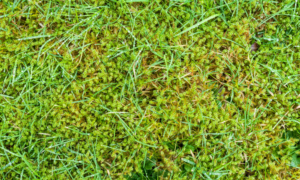Creating a vegetables and herbs garden offers a rewarding way to connect with nature, enjoy fresh produce, and add vibrant greenery to your outdoor space. Whether you’re a seasoned gardener or just starting, growing your vegetables and herbs can enhance your meals and provide a therapeutic hobby.

In this blog post, we’ll explore essential tips for establishing a thriving garden, from choosing the right plants to maintaining optimal growing conditions. Get ready to transform your garden into a bountiful haven of fresh flavors and lush greenery!

Choosing the Right Vegetables and Herbs
Selecting the right vegetables and herbs for your garden is crucial for success. Consider your climate, soil type, and the amount of sunlight your garden receives. Popular vegetables like tomatoes, peppers, cucumbers, and carrots thrive in sunny, well-drained soils. Herbs such as basil, mint, thyme, and rosemary are versatile and can often be grown in containers or raised beds.


For a beginner-friendly garden, start with easy-to-grow varieties. Leafy greens like lettuce and spinach are quick to harvest and provide continuous yields. Similarly, herbs like parsley and chives are resilient and useful in a variety of dishes.
Preparing Your Garden Space
Proper preparation of your garden space ensures a healthy growing environment for your vegetables and herbs. Start by selecting a location with ample sunlight, ideally receiving at least 6-8 hours of direct sunlight daily. Test and amend your soil to ensure it is rich in organic matter and well-draining. Adding compost or aged manure can improve soil fertility and structure.

Consider using raised beds or container gardens if your soil quality is poor or if space is limited. These options allow for better control over soil conditions and can be ideal for small urban gardens or patios.
Planting and Maintenance Tips
Once your garden space is prepared, it’s time to plant. Follow the recommended spacing and planting depth for each vegetable and herb to ensure they have room to grow. Water your plants regularly but avoid overwatering, as this can lead to root rot. Use mulch to retain moisture and suppress weeds, while also providing a steady supply of nutrients as it decomposes.


Regular maintenance is key to a successful garden. Monitor for pests and diseases, and take action promptly if issues arise. Prune plants as needed to promote healthy growth and remove any dead or diseased foliage.


Harvesting and Using Your Produce
Harvesting your vegetables and herbs at the right time ensures the best flavor and nutritional value. Most vegetables should be picked when they are firm and colorful, while herbs are best harvested just before they begin to flower for optimal flavor. Regular harvesting encourages continued growth and can prevent overripe or bolting issues.


Enjoy the fruits of your labor by incorporating your homegrown produce into your meals. Fresh herbs can be used in cooking, baking, and even as garnishes. Vegetables can be eaten fresh, cooked, or preserved for later use.
Seasonal Considerations and Crop Rotation
Understanding seasonal changes and practicing crop rotation can enhance your garden’s productivity and health. In cooler months, consider planting hardy vegetables like kale and root crops. During warmer months, switch to heat-loving plants such as tomatoes and peppers.


Crop rotation helps prevent soil depletion and reduces the risk of pests and diseases. By rotating your crops each season, you can maintain soil fertility and keep your garden in top condition for future plantings.

Creating a successful vegetables and herbs garden requires careful planning, proper maintenance, and an understanding of your plants’ needs. By choosing the right plants, preparing your garden space, and following essential care tips, you can enjoy a thriving garden that provides fresh produce and a touch of nature to your home. Embrace the joys of gardening and savor the satisfaction of growing your vegetables and herbs!




